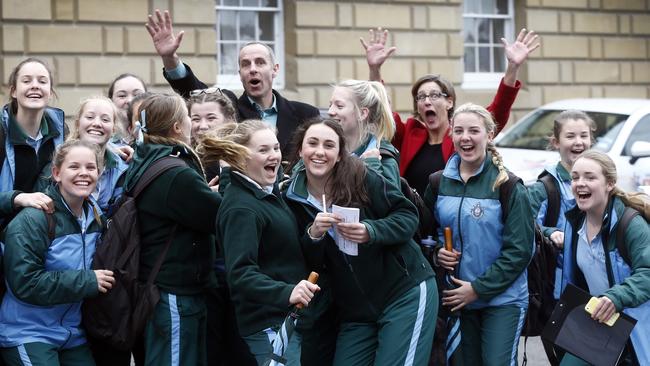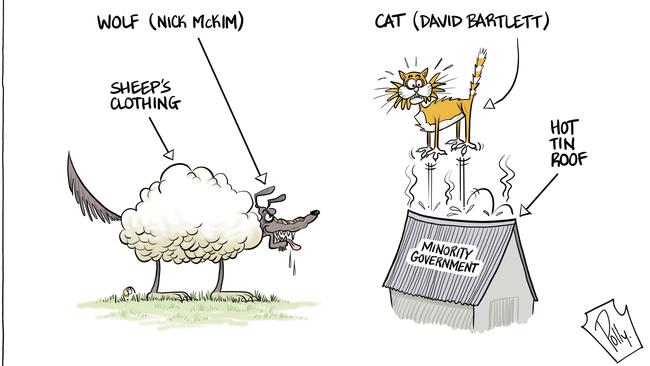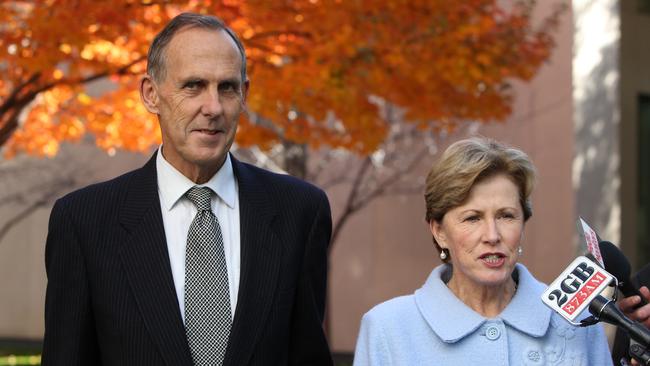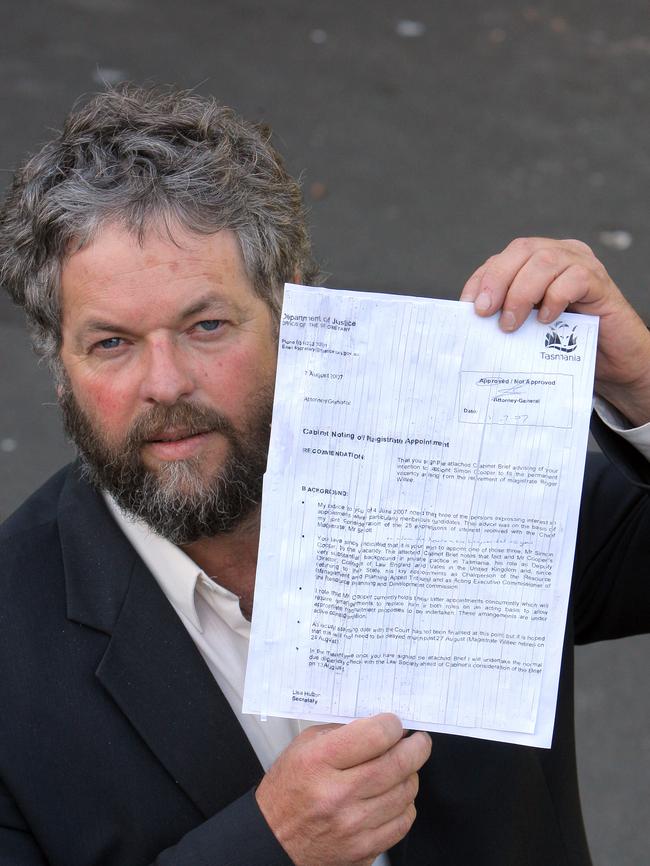The party is far from over for the Greens, says Wayne Crawford
WALKLEY Award-winning political journalist Wayne Crawford considers the future of the Greens.

Opinion
Don't miss out on the headlines from Opinion. Followed categories will be added to My News.
THE 80 per cent of the electorate who would rather cut their arm off than vote Green will find it tempting to eagerly predict the demise of the party after the leadership bombshells of the past two weeks.
But like Mark Twain – who cabled the Associated Press in 1897 complaining: “The report of my death was an exaggeration” – the Greens can be excused for regarding predictions of their demise to be a tad premature.
“I’ve seen people write the obituary of the Greens continually since I’ve been a Greens member, and (it’s) … just plain wrong,” insisted Nick McKim this week in the aftermath of the resignation of Tasmanian leader Kim Booth, and the announced exit of national leader Christine Milne.
“The party is always bigger than any one individual.”
MORE: CHRISTINE MILNE RESIGNS AS GREENS LEADER
Indeed, we have been here many times before.
The Greens were going to be destroyed when, in 1992, the Labor-Green Accord was crushed under a pile of woodchips. They were wounded, certainly, but they recovered quickly.
And again in 1998 after Liberal premier Tony Rundle and Labor opposition leader Jim Bacon conspired to rid the state of the irritating Greens by slashing the size of State Parliament so (it was wrongly calculated) it would be harder for minority groups to win seats. This didn’t work, either.
Then they were supposedly on the way out in Tasmania when their founder and spiritual leader Bob Brown quit state politics in 1993 to go into the Senate. And again, nationally, in 2012 when Brown left politics altogether and handed the leadership over to Milne, it was predicted the Greens would never survive without his charismatic authority. But survive they did, and thrive by winning an extra Senate seat, even though their vote went down.
They were said to be headed for the door again after the Bartlett-Giddings minority state government ended in acrimony last year after a four-year dalliance.

The alliance had been stitched up in April, 2010 between David Bartlett and Nick McKim during their famous bike ride along the Pipeline Track – but it turned sour after it became clear the rank and file in both the Labor and Green parties were feeling angry and disillusioned at what had been a shotgun marriage of inconvenience.
Certainly the Green vote in Tasmania fell in last year’s election to about two-thirds of the all-time peak of 21.6 per cent which, in the 2010 election, had allowed them to go into minority government with Labor – but if the electoral system had not been rigged against them (by cutting the size of Parliament) the 2014 vote would have been enough to win them five, instead of only three seats.
Federally, the Greens’ vote did drop in the 2013 Senate election to 9.2 per cent from its record 13.1 per cent of the vote in 2010 – but the party still managed to pick up enough support to give it 10 Senators on the crossbench, its best ever result.
Thus, the pattern both in Tasmania and nationally is not of a declining party – and there is no evidence to suggest the changes of the past fortnight will necessarily harm it. But the political landscape is changing dramatically for the Greens.

The party has its roots in Tasmania but with the exit of Bob Brown and now Christine Milne, and the elevation of Victorian Senator Richard Di Natale to the federal leadership, the focus will shift to Victoria where the Greens also hold their only House of Representatives seat (Adam Bandt in the seat of Melbourne).
In the Victorian state election last year, support for the Greens reached 11.5 per cent – which is close to the 13.8 per cent won by the Greens in their Tasmanian heartland at state election the same year. Greens won seven seats in the Victorian Lower House — which, in a single-member electorate system, was an impressive haul.
Back in Tasmania, Cassy O’Connor, the presumptive new leader of the Greens replacing Kim Booth once the game of musical chairs is finished, will have her work cut out to create a new dynamic for the party as it faces an era without any of its founding members. O’Connor, although she can be a hard-nosed political fighter is not as divisive as Booth.
She was widely regarded as a competent minister, and managed a heavy workload in the Bartlett and Giddings Cabinets.
Booth is more of a take-no-prisoners political brawler, and has the scalps of two Labor deputy premiers (Bryan Green and Steve Kons) on his belt.
MORE: KIM BOOTH’S GREATEST HITS

Green, now Labor Leader, was forced out of the deputy premiership in 2008 after Booth’s dogged and forensic parliamentary pursuit which ended in Green twice facing Criminal Court charges in the Tasmanian Compliance Corporation scandal. Juries twice failed to reach a verdict and the charges were eventually dropped.
Booth was also responsible for one of the most spectacular parliamentary ambushes ever, famously known as “shreddergate”. Steve Kons, who was appointed as deputy premier when Green resigned, was caught out lying to Parliament over allegations about a proposed magisterial appointment. Kons had stridently denied ever having proposed the appointment. But a whistleblower gave Booth a plastic bag containing a shredded letter which had been taken from a wastepaper bin in Kons’ office.
Booth and his wife, Kerin, spent the weekend at their home reassembling the paper shreds and attaching them together with sticky tape.
In Parliament, under questioning from Booth, Kons continued to deny any such letter had ever been written, at which point Booth theatrically waved the document which proved he was lying. Kons resigned.
It is unlikely we will ever see the likes of Kim Booth again in Parliament.
It is unlikely we will ever see the likes of Kim Booth again in Parliament. Always dressed casually in an open-necked shirt, with his grey hair ruffled, the former sawmiller gave little thought to appearance – but was a fervent upholder of the role of Parliament as a forum to settle political disputes and hold the Government of the day to account. His lexicon was replete with words like “liar” and “corrupt”.
Even his own Green colleagues could never be certain of his support.
When McKim and O’Connor joined the Bartlett Cabinet, Booth said he could not in conscience accept such an offer even if it was made. And, he added, should the need arise he would have no hesitation in withdrawing support for, or moving no-confidence in the government of which his colleagues were members.
Even his departure this week was untimely – on the eve of the most important debate of the year to start next week when the Hodgman Government’s second Budget is brought down.
Not only will the Tasmanian Greens party have to “break in” probably two new and inexperienced MPs, one replacing Kim Booth and another taking over from Nick McKim who is considered the frontrunner to replace Christine Milne in the Senate, but it is also losing the person who has been the Green parliamentary party’s most consistent and stabilising influence for the past 18 years.
Cath Hughes, chief of staff to the Greens Leader, has seen four state leaders come and go, back to Christine Milne in 1997. She has resigned to do further university study.
Hughes’ long experience, skill and knowledge of the party’s corporate history will be sorely missed and impossible to replace.
Although her resignation was unrelated to Booth’s shock retirement and had been known long before, it has come as a blow to the Greens and adds to O’Connor’s challenges in remaking the party.
Wayne Crawford is a former associate editor of the Mercury and a Walkley Award-winning political journalist.


